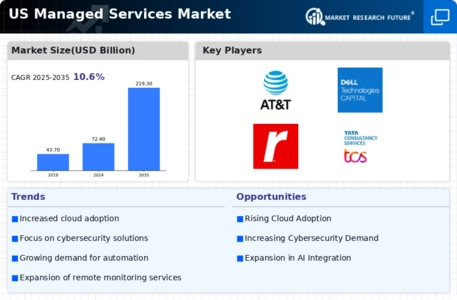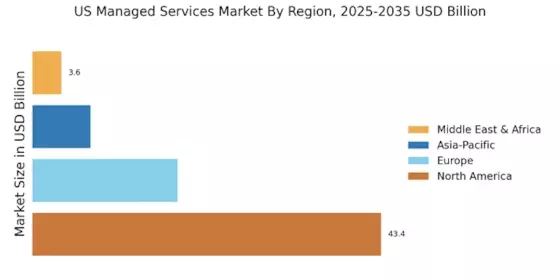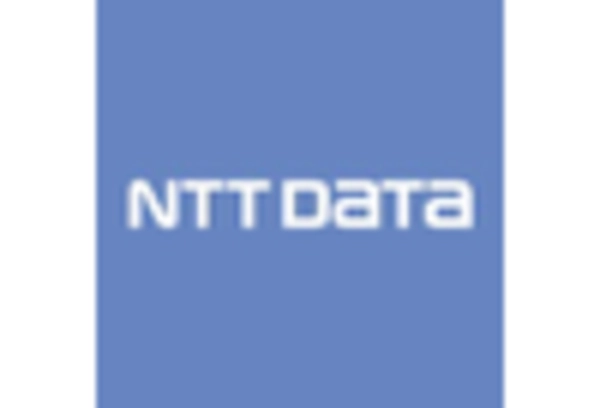The US Managed Services Market is characterized by a dynamic competitive landscape, driven by rapid technological advancements and an increasing demand for digital transformation. Key players such as IBM (US), Accenture (US), and Cognizant (US) are at the forefront, each adopting distinct strategies to enhance their market positioning. IBM (US) focuses on integrating artificial intelligence and cloud services into its offerings, thereby facilitating a more agile and responsive service model. Accenture (US), on the other hand, emphasizes strategic partnerships and acquisitions to bolster its capabilities in emerging technologies, while Cognizant (US) is concentrating on expanding its service portfolio to include more comprehensive digital solutions. Collectively, these strategies not only enhance their competitive edge but also contribute to a more fragmented yet innovative market environment.
In terms of business tactics, companies are increasingly localizing their operations to better serve regional markets, which appears to be a response to the growing demand for tailored services. The competitive structure of the US Managed Services Market is moderately fragmented, with several players vying for market share. This fragmentation is indicative of a landscape where innovation and customer-centric solutions are paramount, allowing companies to differentiate themselves through specialized offerings.
In September 2025, IBM (US) announced a strategic partnership with a leading cloud provider to enhance its managed services capabilities. This collaboration is expected to leverage advanced cloud technologies, thereby enabling IBM to offer more scalable and efficient solutions to its clients. The strategic importance of this partnership lies in its potential to position IBM as a leader in cloud-based managed services, catering to the increasing demand for flexible IT solutions.
In August 2025, Accenture (US) completed the acquisition of a cybersecurity firm, significantly bolstering its security service offerings. This acquisition is strategically vital as it allows Accenture to address the growing concerns around cybersecurity in managed services, thereby enhancing its value proposition to clients. By integrating advanced security measures into its managed services, Accenture is likely to attract a broader client base seeking comprehensive solutions.
In July 2025, Cognizant (US) launched a new suite of AI-driven managed services aimed at optimizing operational efficiency for its clients. This initiative reflects Cognizant's commitment to innovation and its understanding of the market's shift towards automation and AI integration. The introduction of AI-driven solutions is expected to enhance service delivery and operational performance, positioning Cognizant favorably in a competitive landscape increasingly focused on technological advancement.
As of October 2025, the competitive trends in the US Managed Services Market are heavily influenced by digitalization, sustainability, and the integration of artificial intelligence. Strategic alliances are becoming increasingly pivotal, as companies recognize the need to collaborate to enhance their service offerings and technological capabilities. Looking ahead, competitive differentiation is likely to evolve from traditional price-based competition to a focus on innovation, technology integration, and supply chain reliability, suggesting a transformative shift in how companies position themselves in the market.


















Leave a Comment